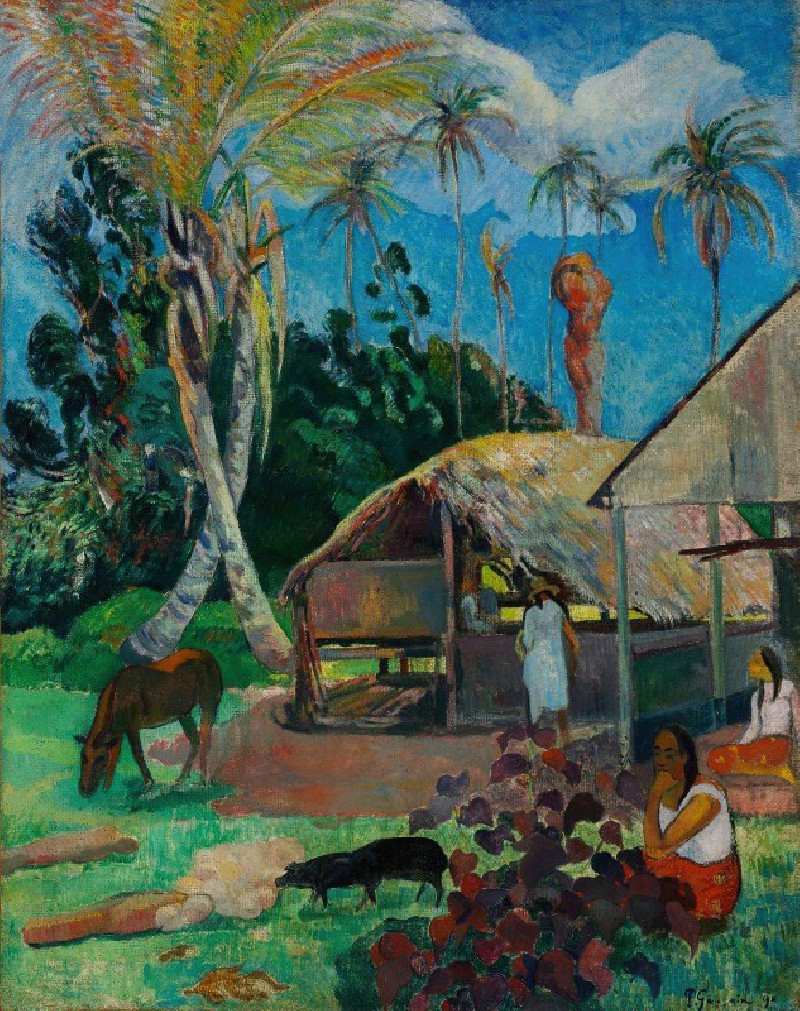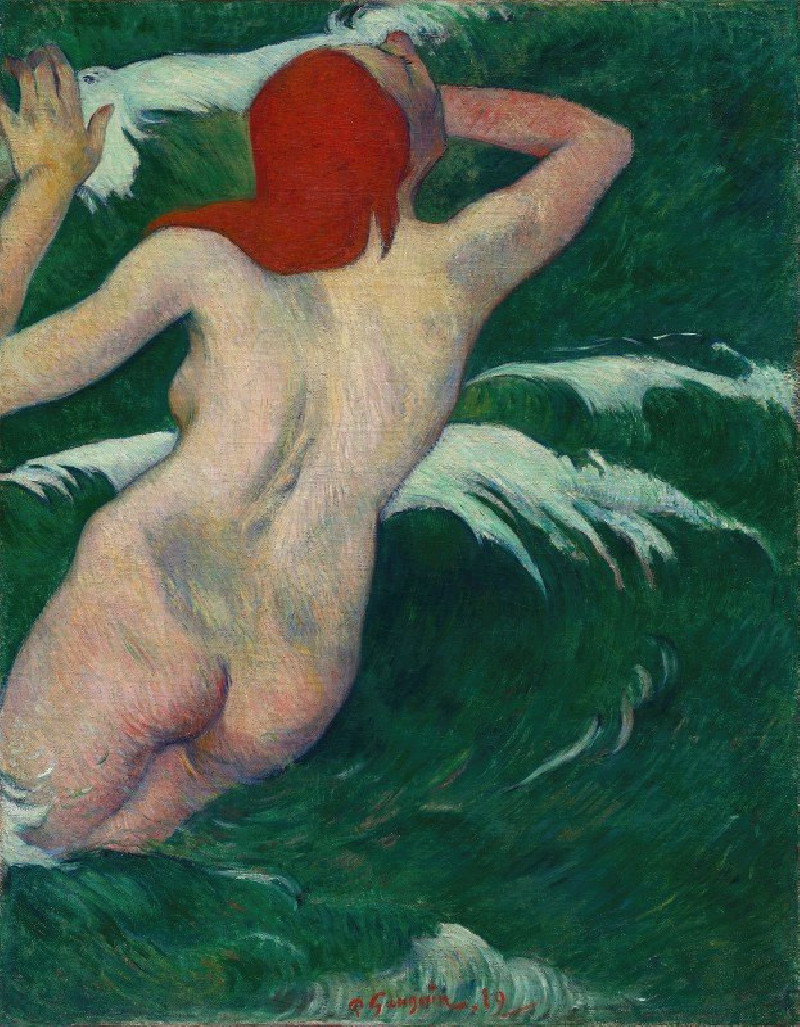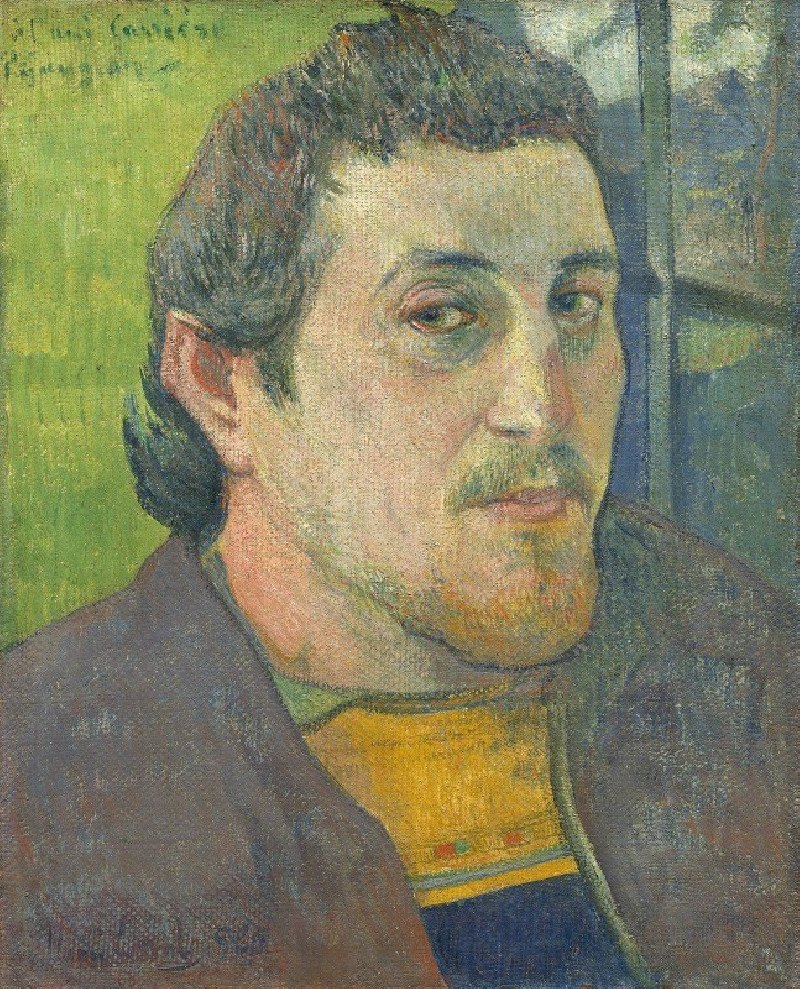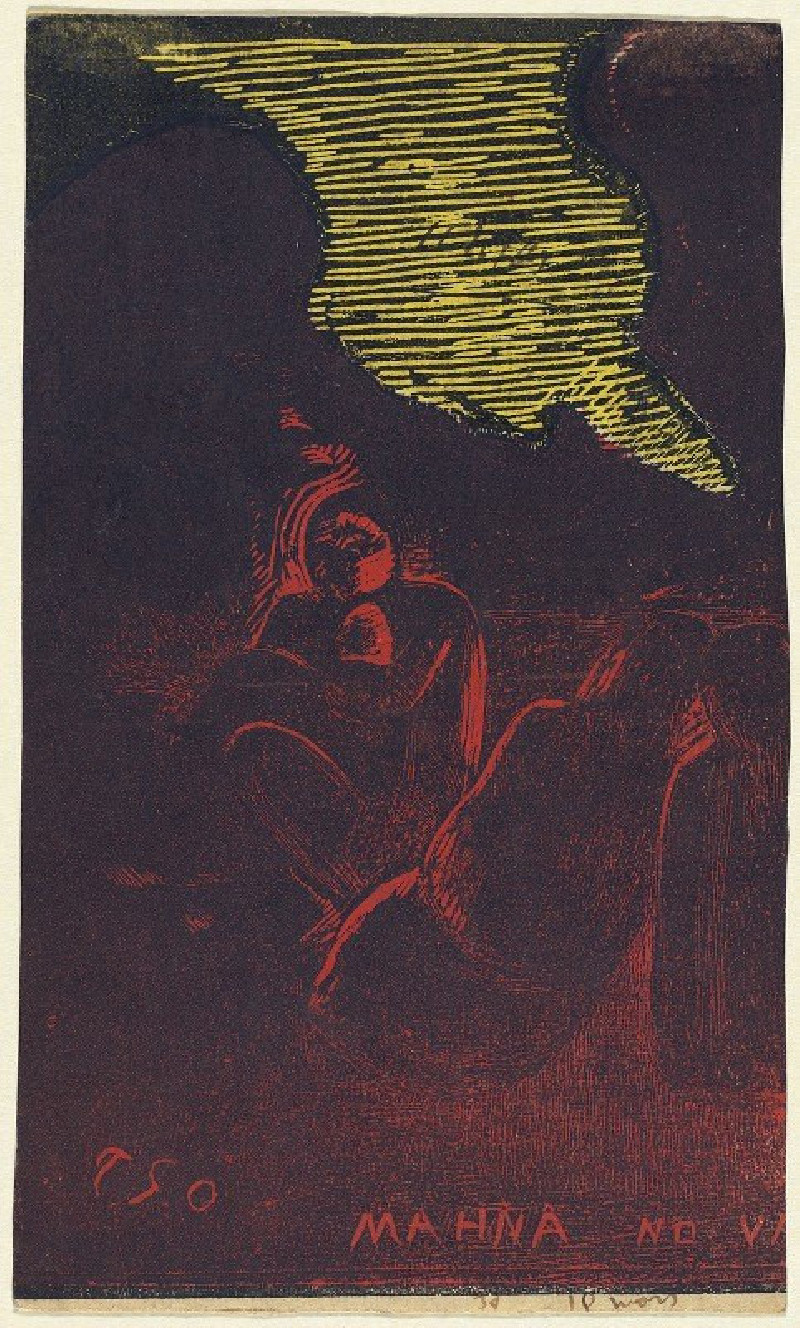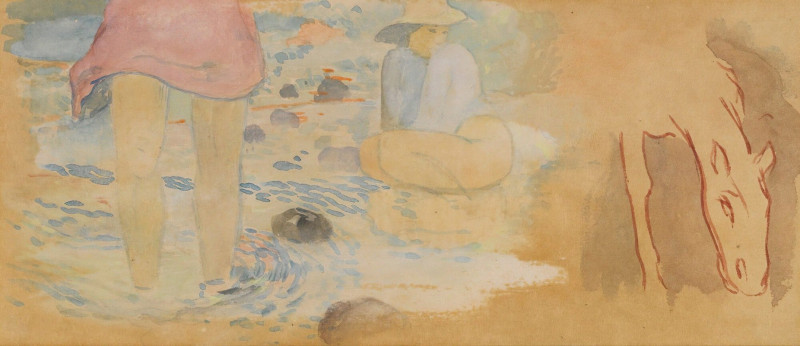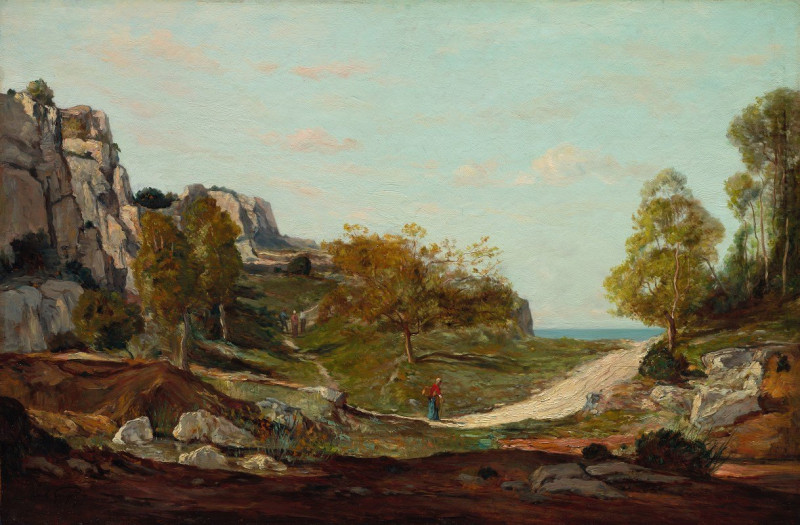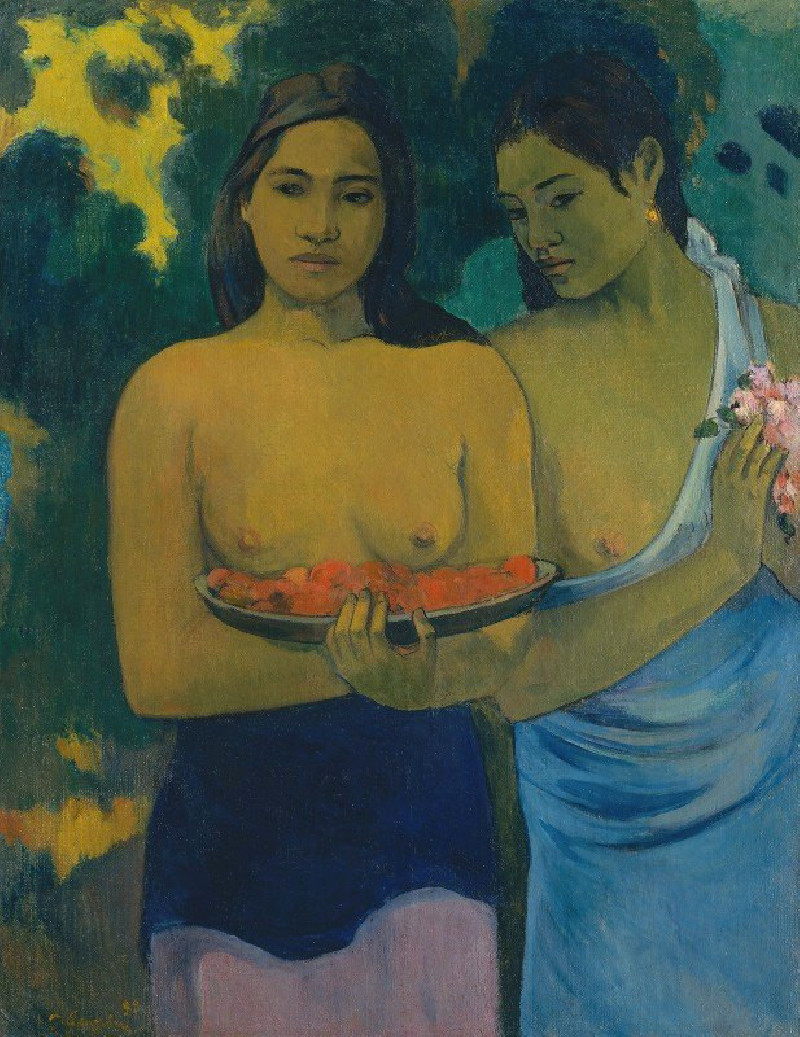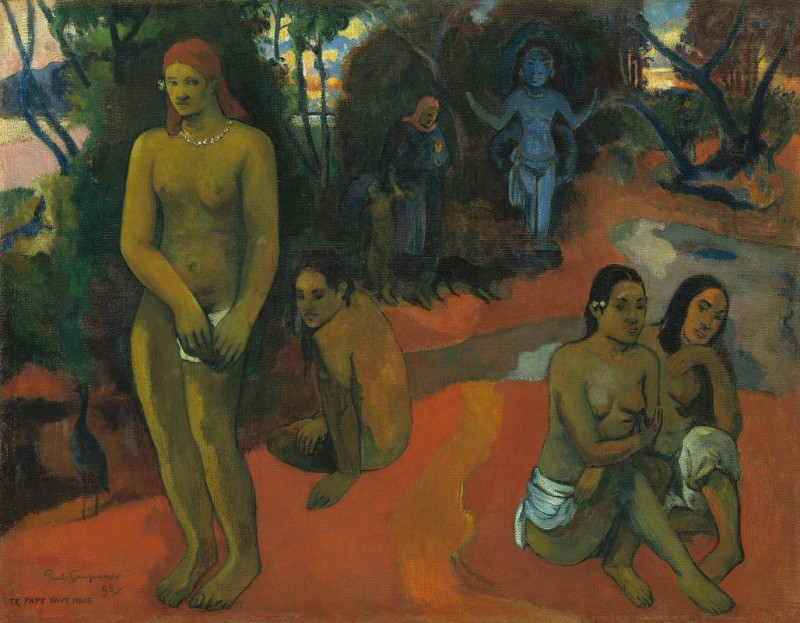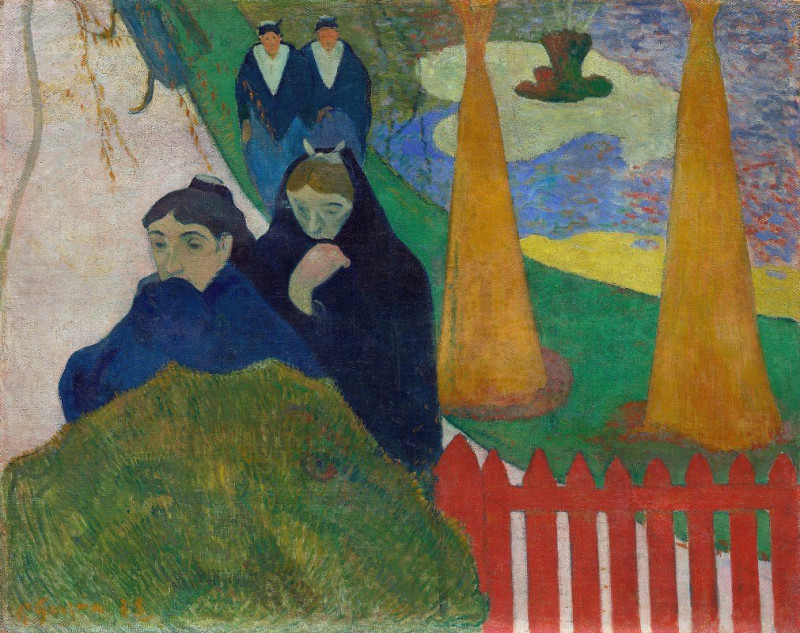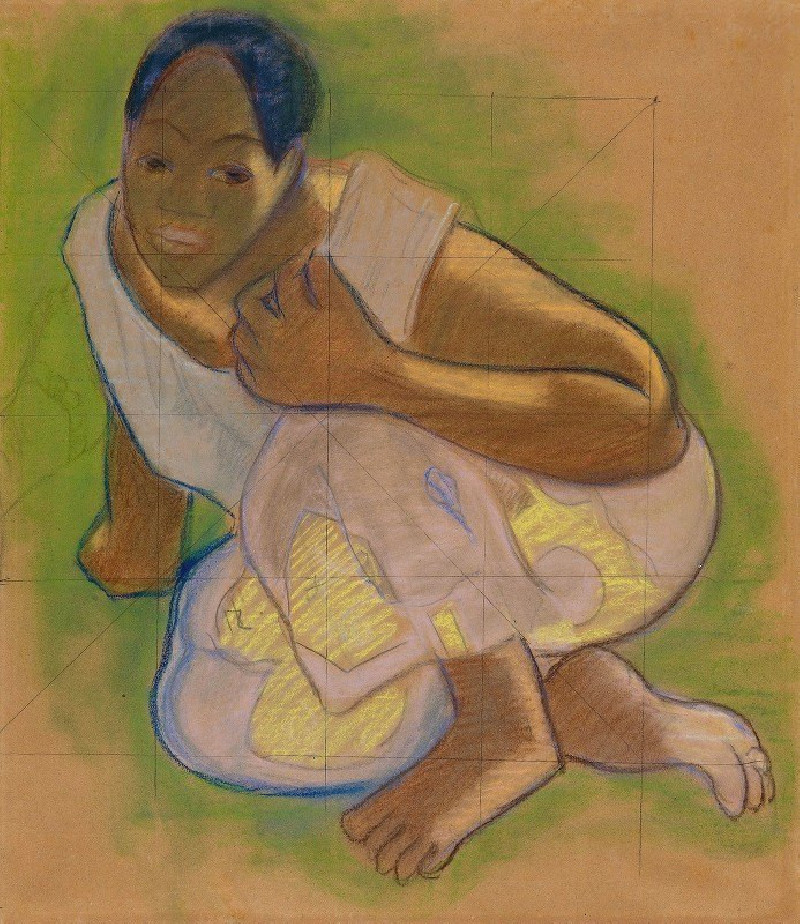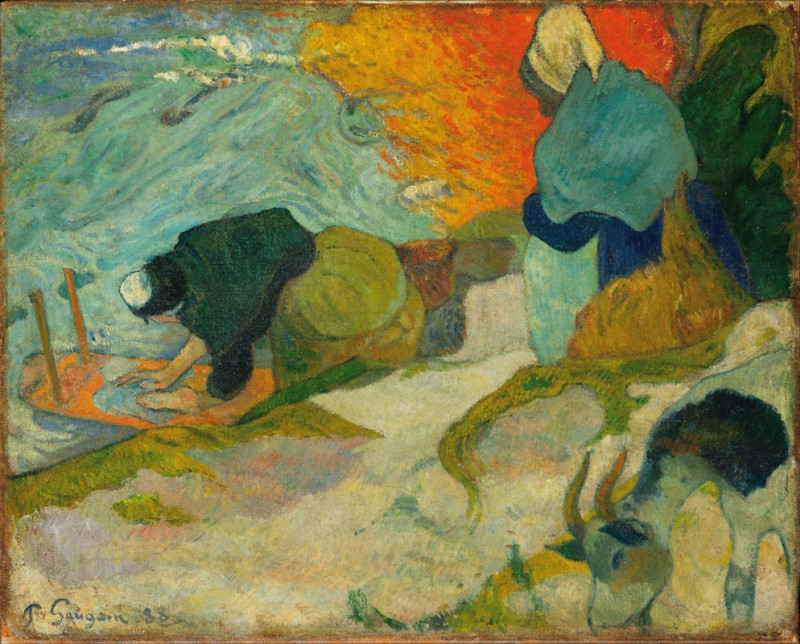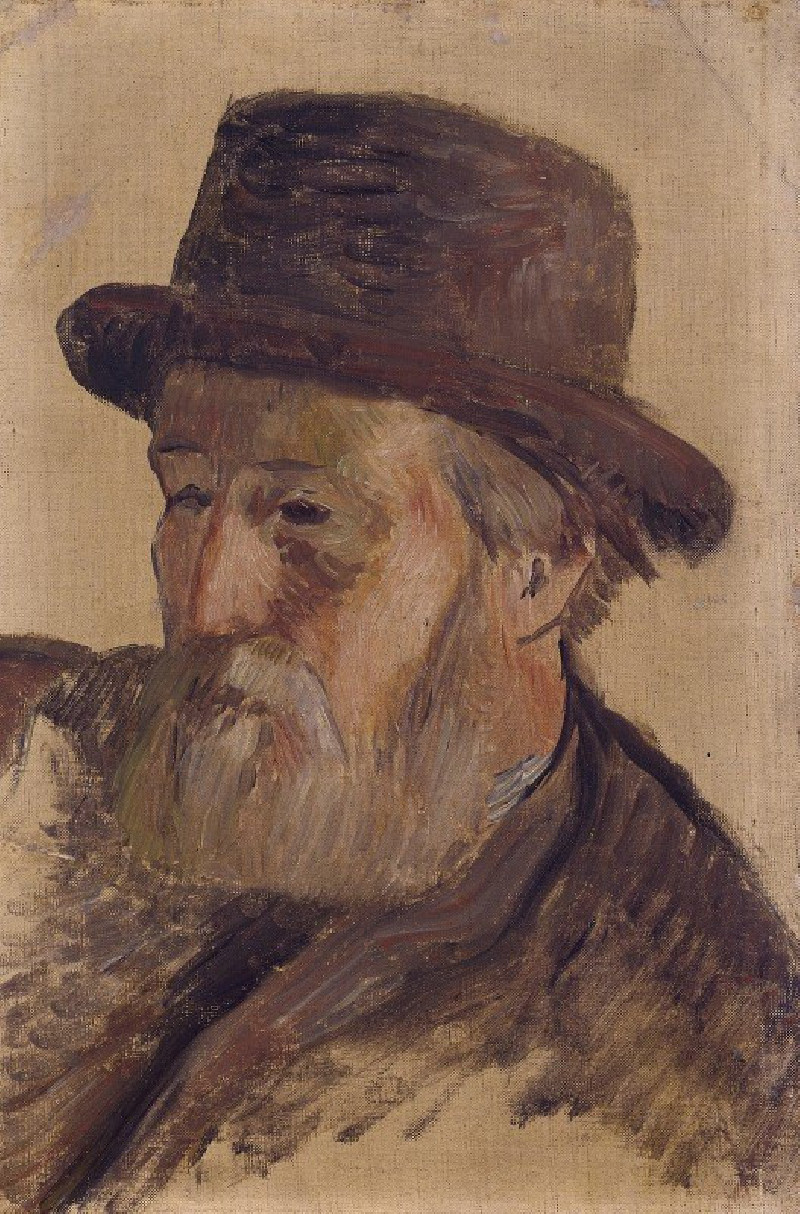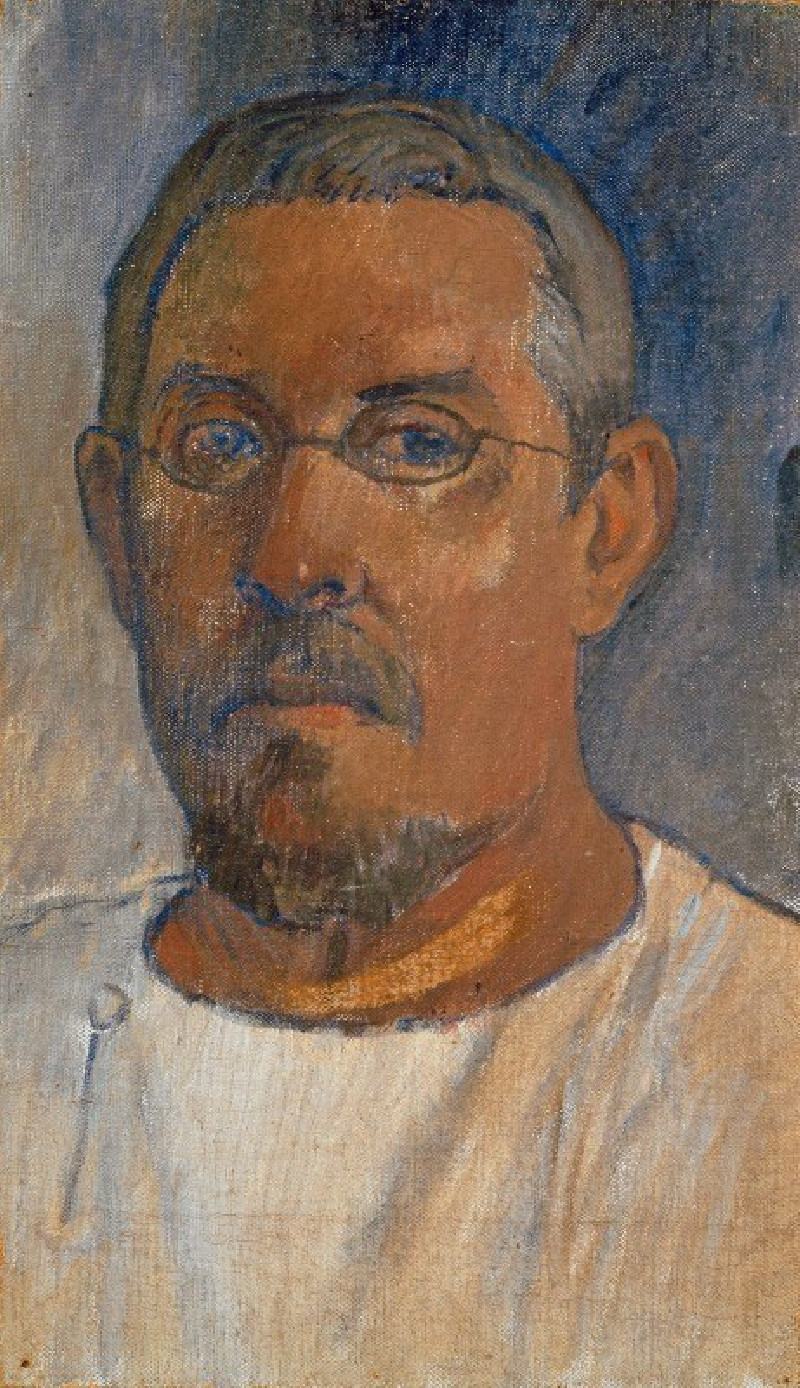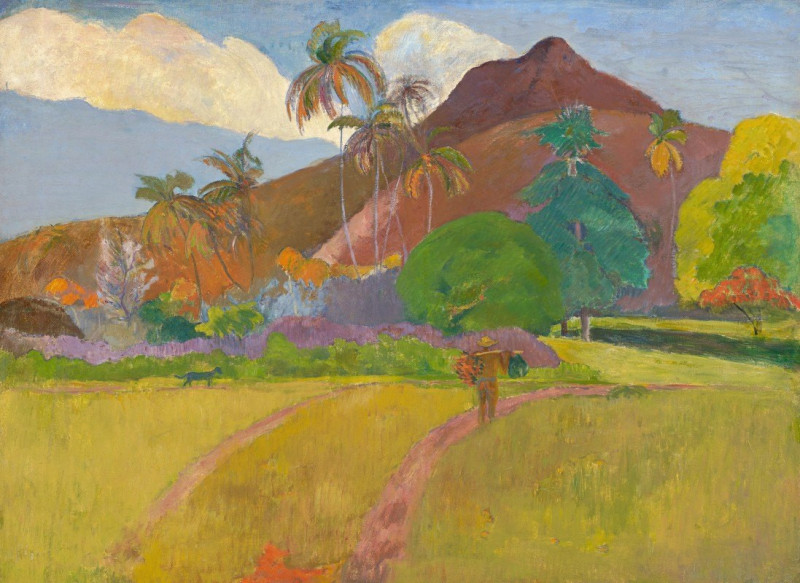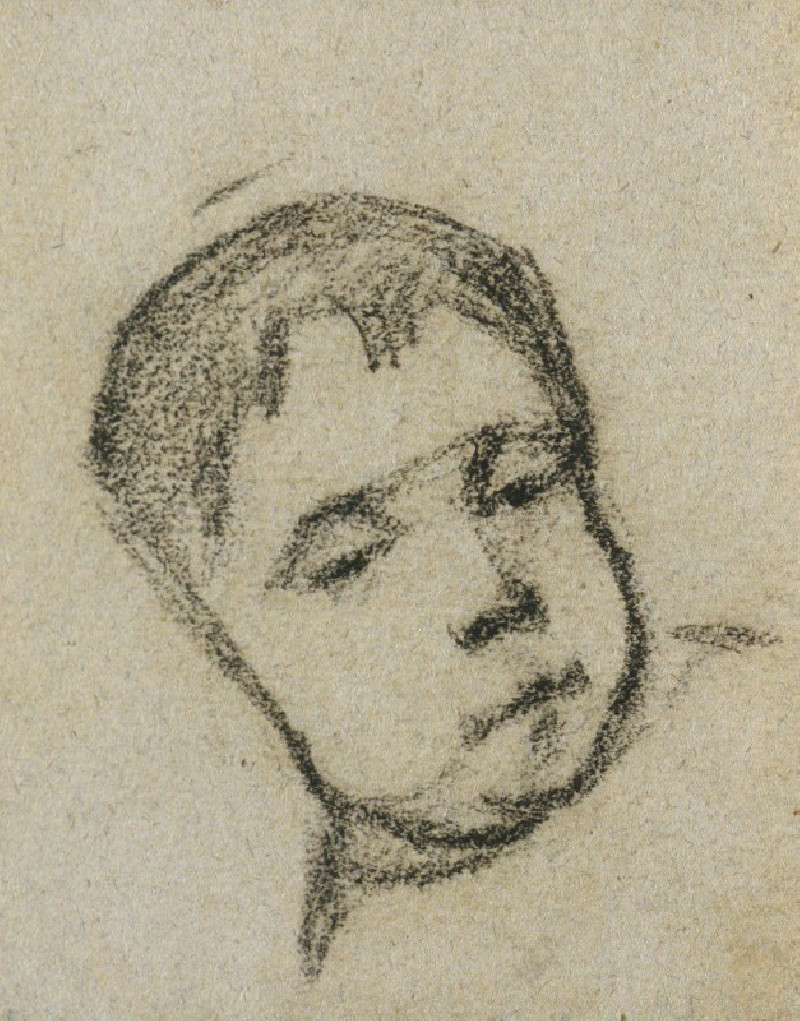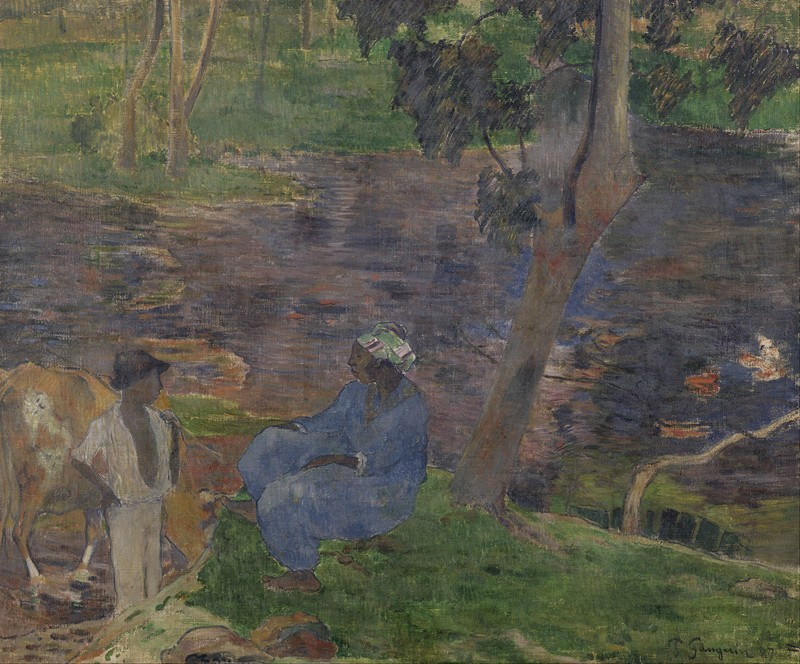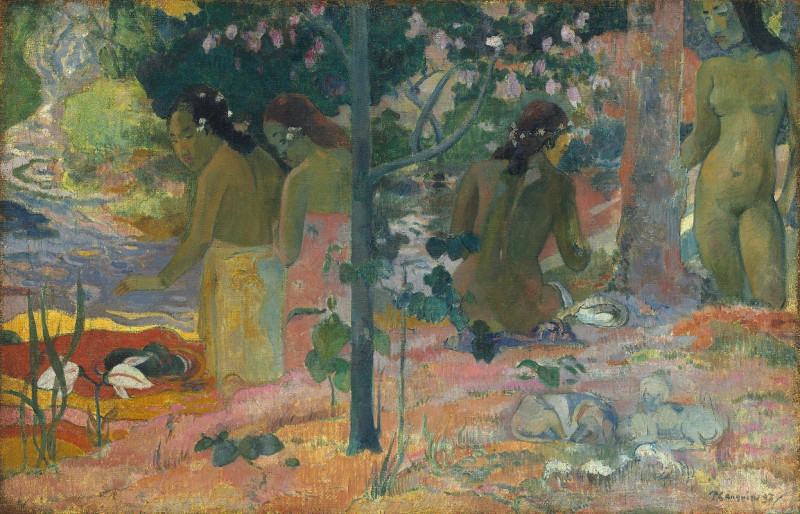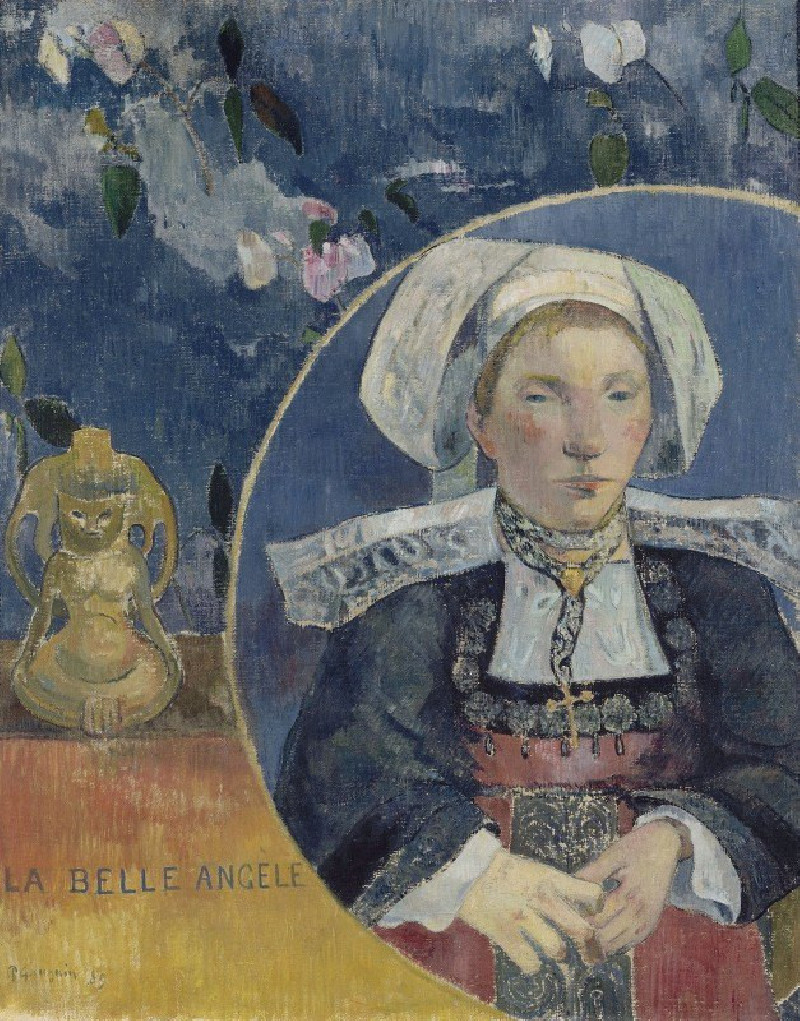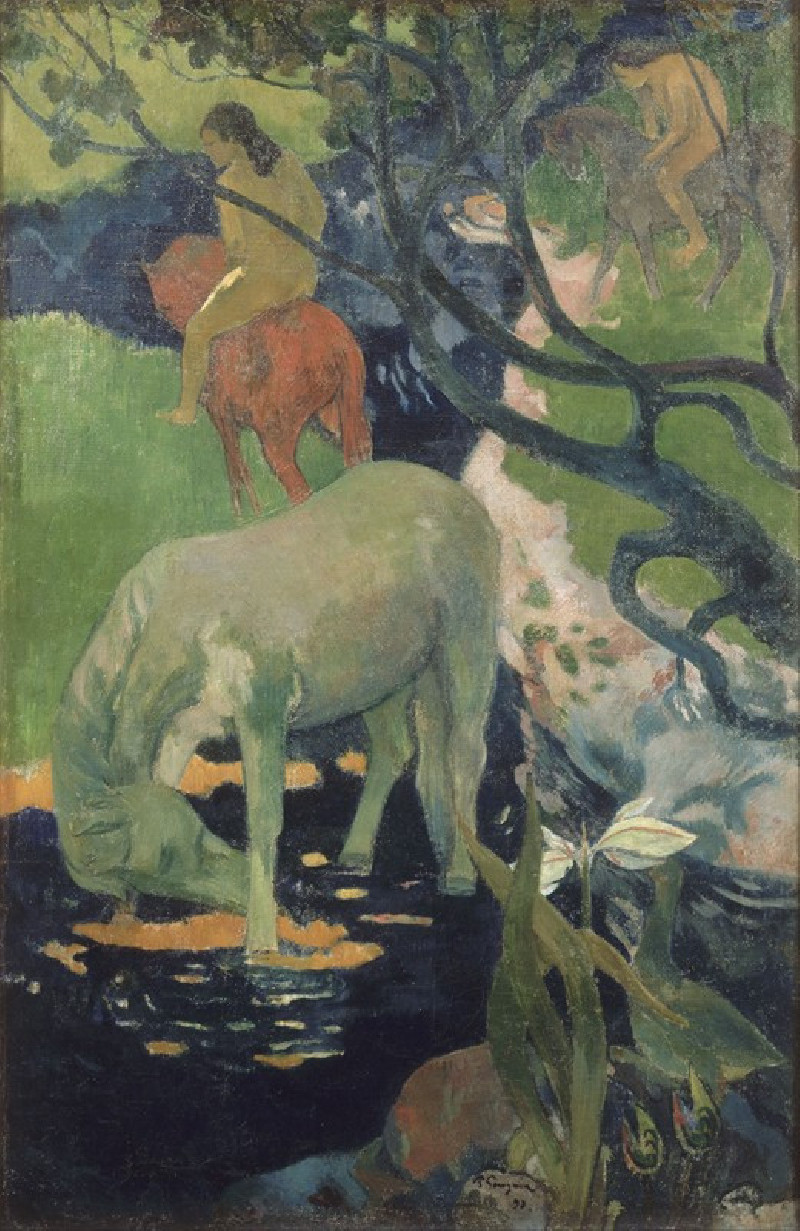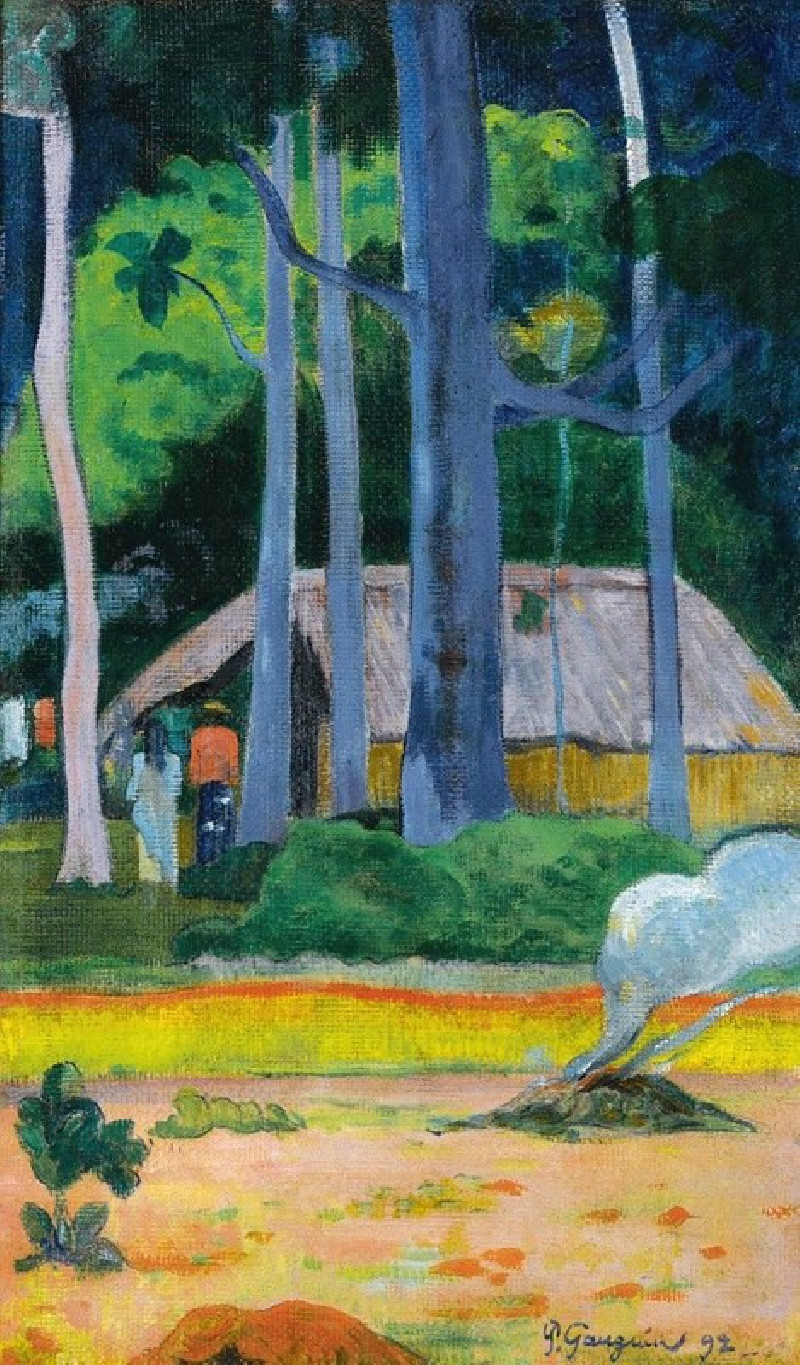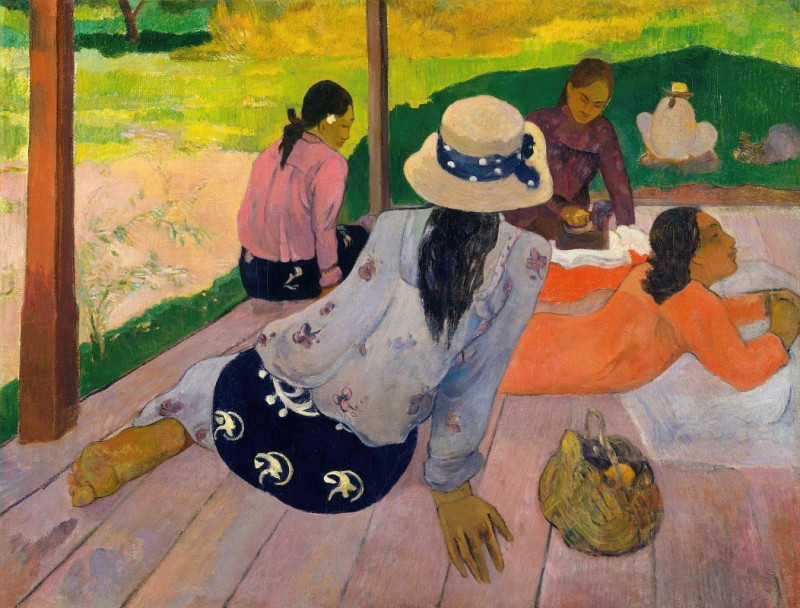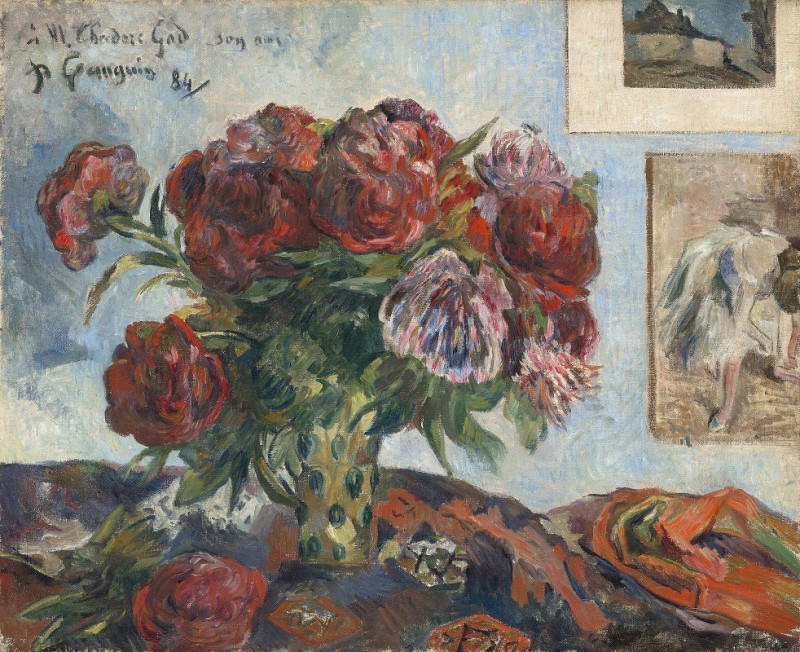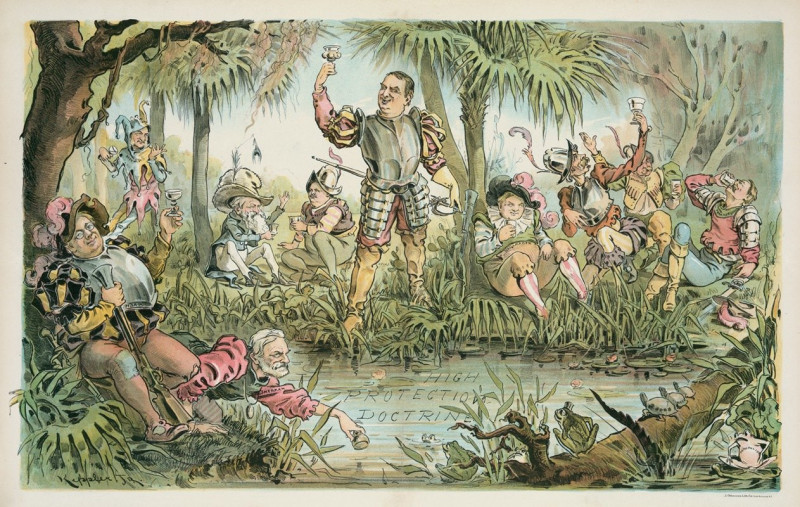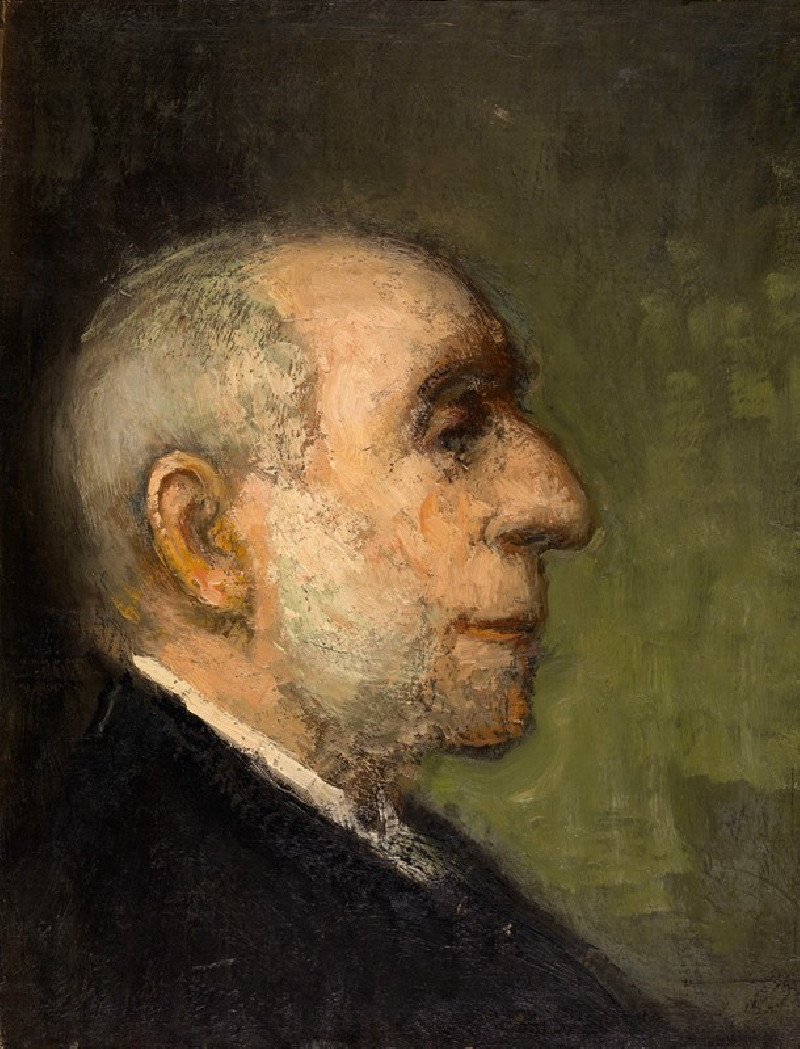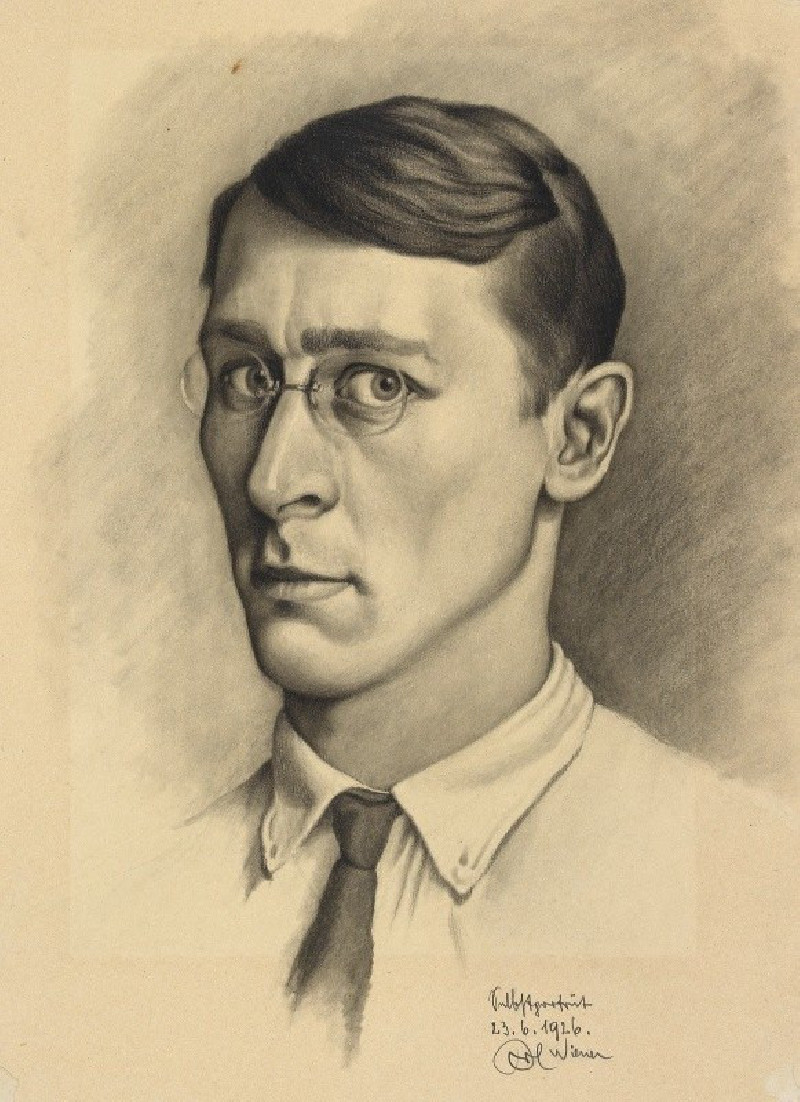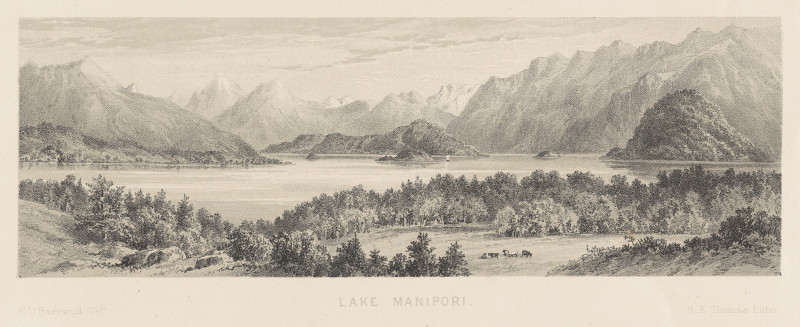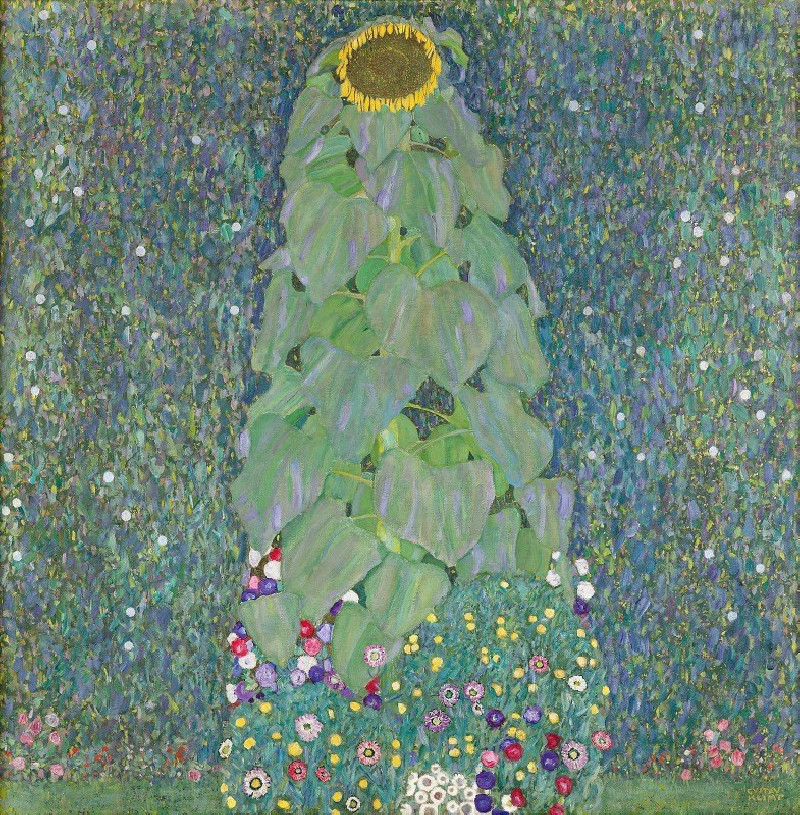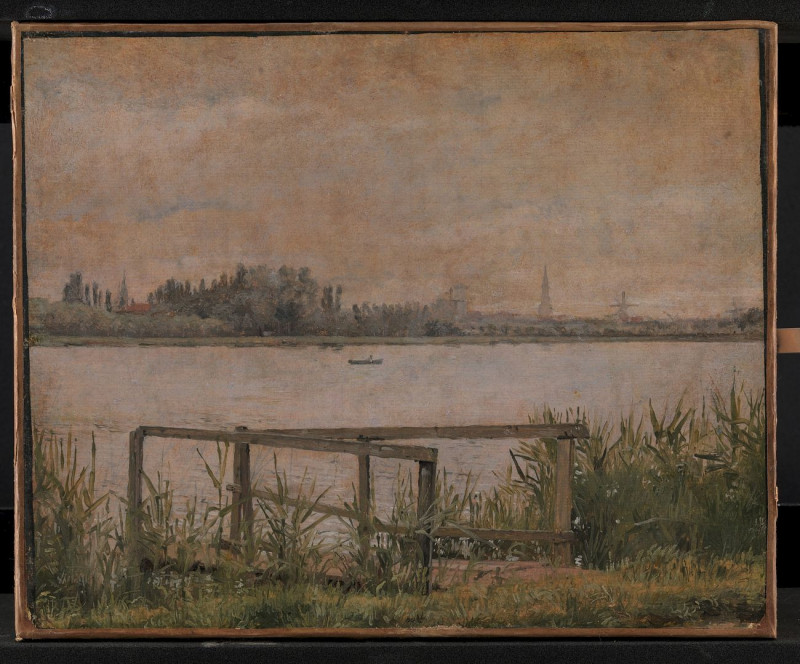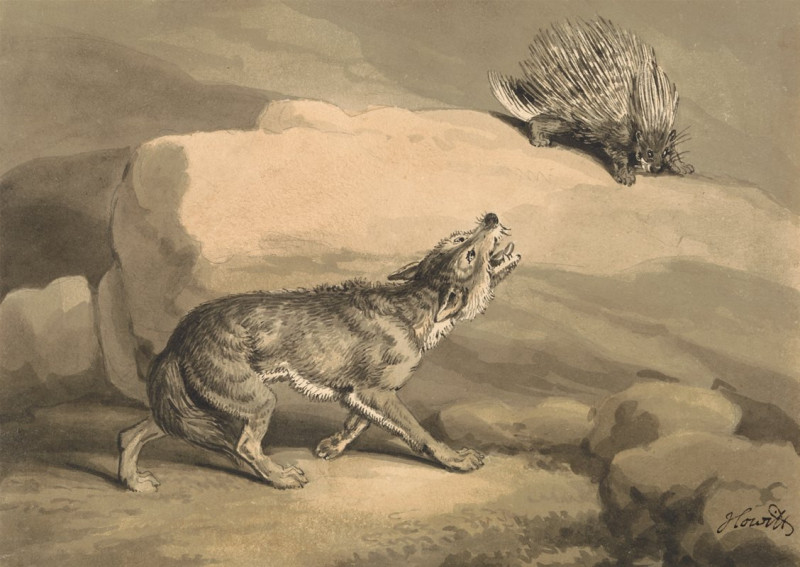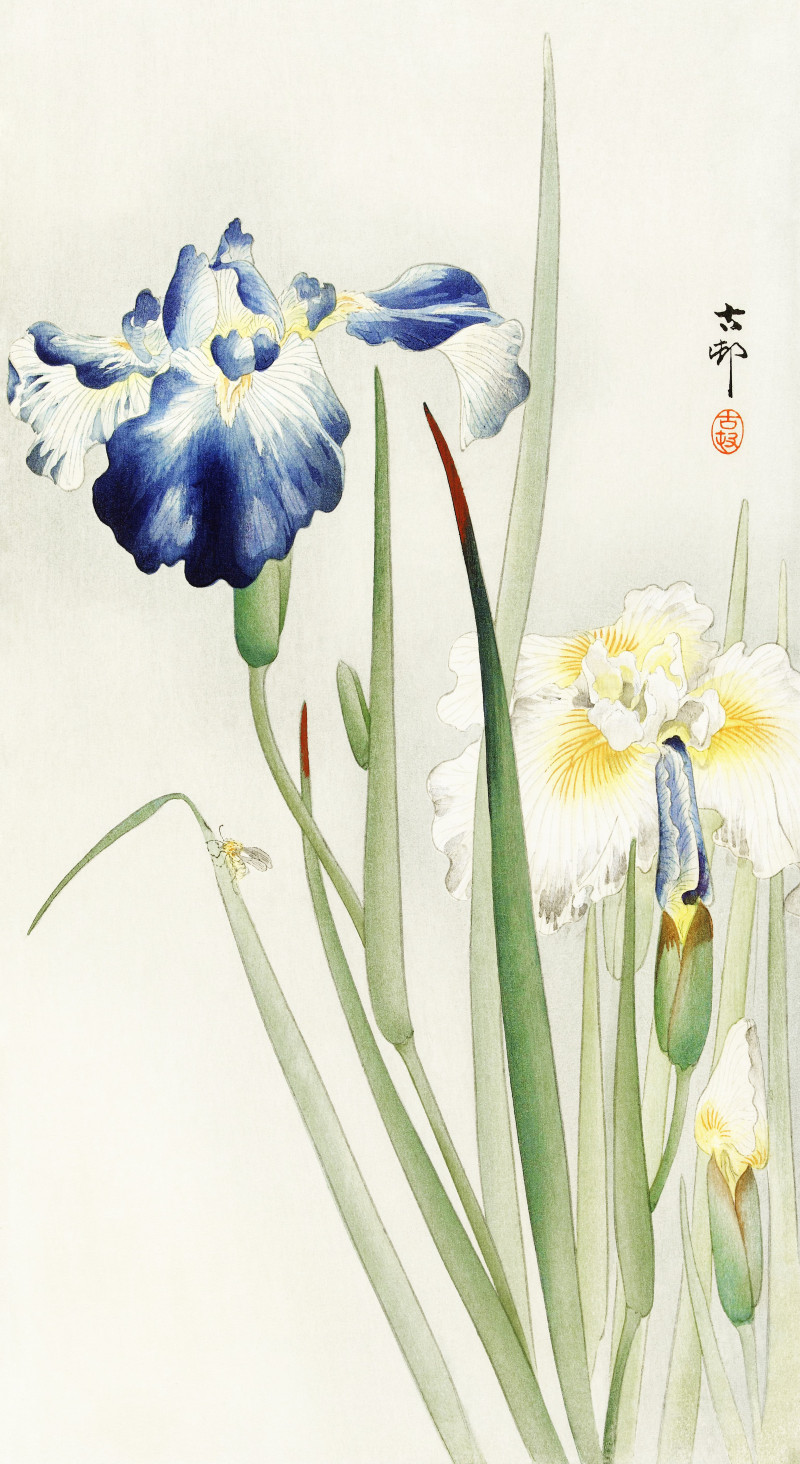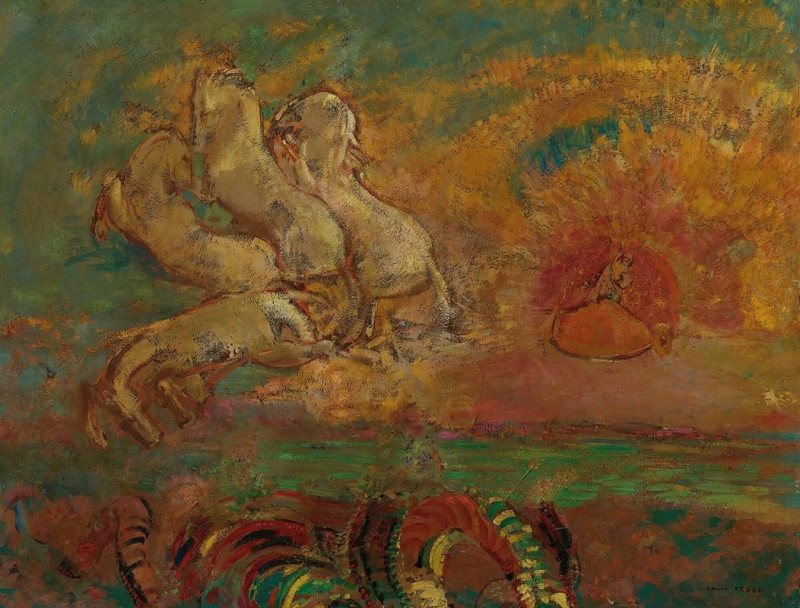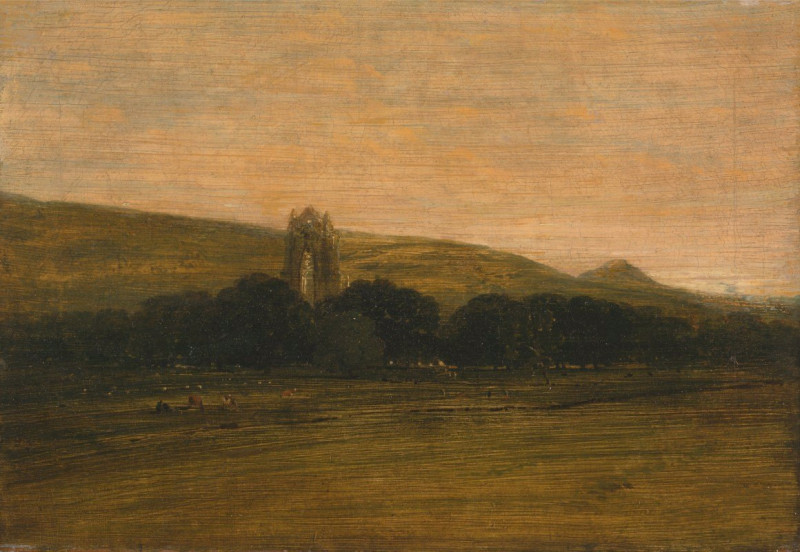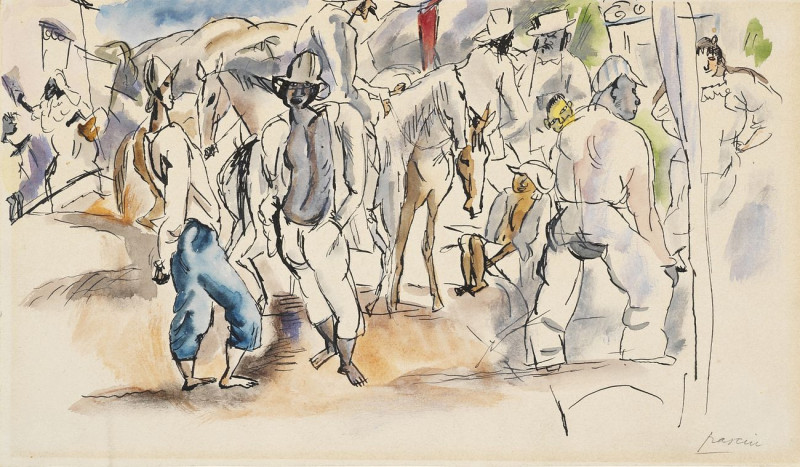No te aha oe riri (Why Are You Angry) (1896)
Technique: Giclée quality print
Recommended by our customers
More about this artwork
Paul Gauguin, a leading Post-Impressionist artist, captures a serene yet profound scene in his painting "No te aha oe riri" (Why Are You Angry), created during his time in Tahiti in 1896. This artwork reflects Gauguin’s fascination with Tahitian culture and his search for a primitive paradise away from the constraints of European society.The painting presents a glimpse of daily life in Tahiti with a group of Tahitian women portrayed in various states of rest and activity. The foreground features two women sitting on the ground, engaging with a flock of chickens, suggesting a moment of peaceful interaction with nature. Another woman, standing in a striking blue dress, gazes thoughtfully into the distance, adding an air of contemplation and depth to the scene. The background offers a view of another woman seated beneath the shelter of a thatch hut, further contributing to the narrative of daily life and community.Gauguin’s use of color is lush and vibrant, with the rich greens of the tropical foliage and the striking blue of the Tahitian attire contrasting against the earthy tones of the landscape. This palette not only romanticizes the exotic locale but also invokes a sense of harmony and tranquility."No te aha oe riri" is a compelling exploration of emotion and culture, posing silent questions about the sources of discontent and the nature of happiness. Through this painting, Gauguin delves into the essence of human emotions, using the backdrop of Tahitian life to reflect broader, more universal themes.
Delivery
Returns
Eugène Henri Paul Gauguin was a French Post-Impressionist artist. Unappreciated until after his death, Gauguin is now recognized for his experimental use of color and Synthetist style that were distinct from Impressionism. Toward the end of his life, he spent ten years in French Polynesia. The paintings from this time depict people or landscapes from that region.


